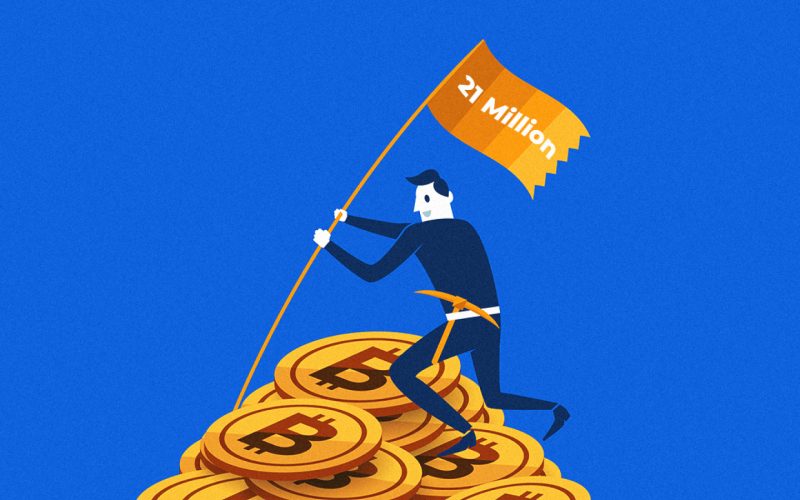The number of bitcoins ever created was set by the anonymous Bitcoin creator Satoshi Nakamoto at 21 million; hence there will never be more than 21 million bitcoins. One block of bitcoins is added to the Bitcoins supply every ten minutes, on average. In addition, half of the bitcoin goes through the process of depletion every four years in a particular block.
There were approximately 18.7 million bitcoins in circulation as of August 2021, with just about 2.3 million more waiting to discover. The limited quantity of Bitcoin creates a premium for the cryptocurrency while also preventing inflation from taking hold if the supply were unrestricted. For more precise information, visit Bitcoin Trader platform
Is it possible for Bitcoin to Surpass the 21 Million User Mark?
Consider whether Bitcoin will ever reach the 21 million mark before diving into the consequences of the 21 million cap. Given the current state of the cryptocurrency’s coding and mining process, several experts believe that Bitcoin will fall just short of the 21 million coin limit. We should note that miners can solve cryptographic riddles if a block containing transactions in the Bitcoin network is “mined.”
As soon as they confirm a transaction block, miners who have demonstrated it successfully receive block rewards, a fixed quantity of bitcoins. Every four years, the money you earn is in half. A block of confirmed transactions was worth 50 bitcoins when the currency began. It was cut in half to 25 bitcoins in 2012, then to 12.5 bitcoins in 2016. Miners can expect to earn 6.25 BTC for each new block by May 2020.
Suppose we mine all 21 Million Bitcoins. What Will Happen Then?
Due to Bitcoin’s failure to exceed the predetermined maximum, the cryptocurrency’s network may continue to function well until 2140. No new bitcoins will come into the market, but transaction blockages will be confirmed, while fees will take their place as the principal source of income. In the long run, the Bitcoin network may resemble a closed economy, with transaction fees levied similarly to taxes. Is it possible to receive incentives in satoshis rather than in genuine bitcoin?
Any attempt to implement such a scheme would necessitate a highly unlikely revision to the cryptocurrency’s protocol. It’s hard to say what will happen when the total quantity of Bitcoin reaches the level that Satoshi Nakamoto promised. In part, this is because the Bitcoin ecosystem has not yet fully matured.
The Impact on Bitcoin Miners
In the current system, block rewards are then transaction fees to generate cash for miners. Miners can meet their operating costs and maintain a profit because of the high bitcoin price. Bitcoin’s reward amount may not be sufficient to cover miner operating costs, let alone produce profits when the cryptocurrency is nearing its limit of 21 million coins.
When the Bitcoin supply is limited, we will lose all Bitcoin awards. Transaction costs make up the difference in both cases. When it comes to transaction fees, how much and how they calculate depends on whether Bitcoin is using it as a means of payment or a store of wealth, instead of charging acceptable fees to enable Bitcoin use in everyday tasks.
Bitcoin’s Impact on the Internet
Bitcoin’s network is both its most valuable and most helpful feature. The evening bookkeeping & accounting that defines most money transfers today can be solved using distributed ledger technology. The volume of Bitcoin transactions will increase if it becomes widely accepted as a means of payment in the future. According to previous experience, there’s a good possibility the network may slow down. Bitcoin provides a decentralized database to store copies of enormous ledgers to achieve accuracy and integrity rather than speed.
What will happen to Bitcoin?
When Satoshi Nakamoto created Bitcoin, he intended to use it to exchange for regular, everyday transactions. However, the network’s transaction costs are considerable, and processing times are lengthy. It draws the attention of speculative investors because of its dwindling supply and growing price. Because of their bets upon that bitcoin roulette wheel, the asset class has seen dramatic price swings, scaring away serious investors.
Regulators have compared its ecology to the Wild West. We may more clearly define Bitcoin’s identity by when the last coin is produced (or very near to being mined). As with the Lightning Network, the introduction of side channels may have sped up transaction processing on the network as a whole, making it more useful as a legal tender.






